
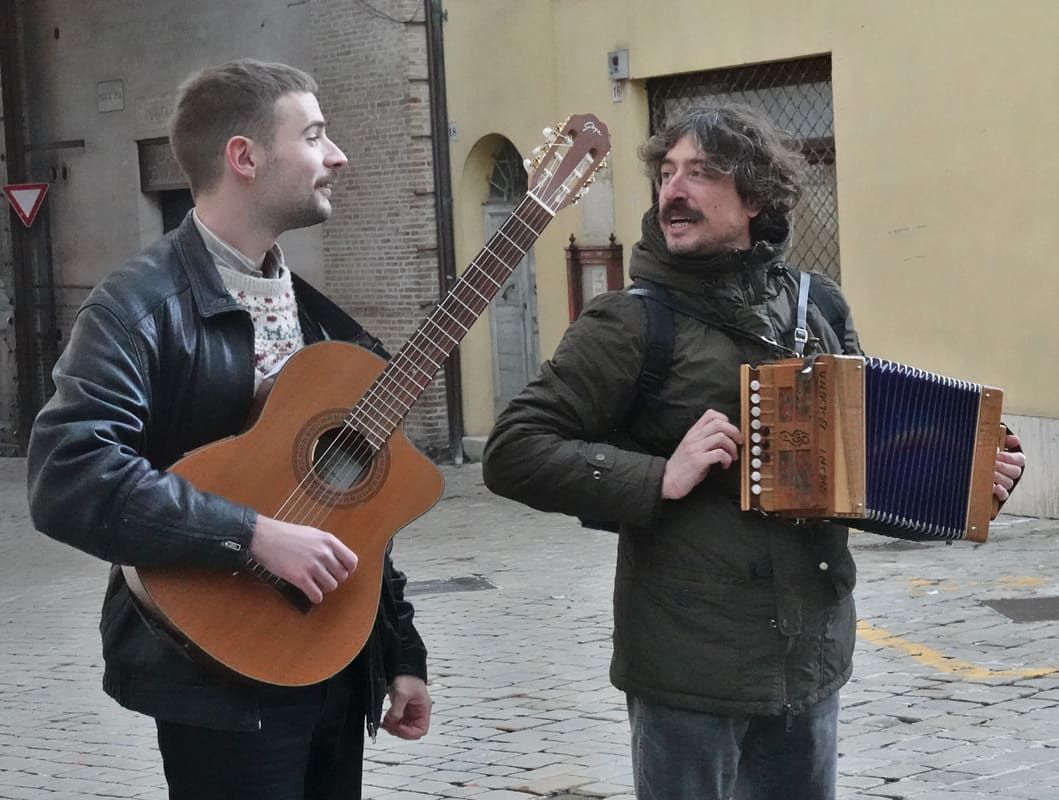





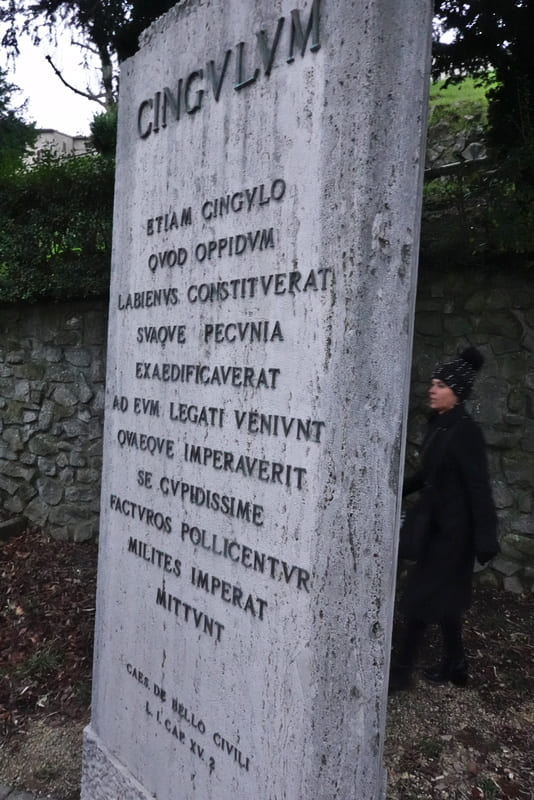
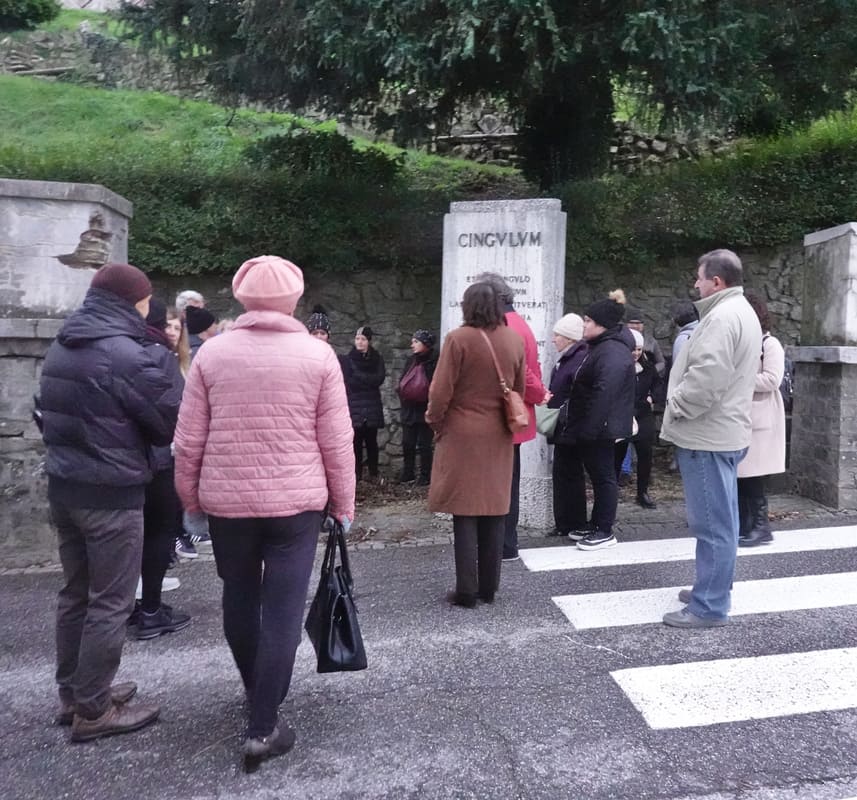
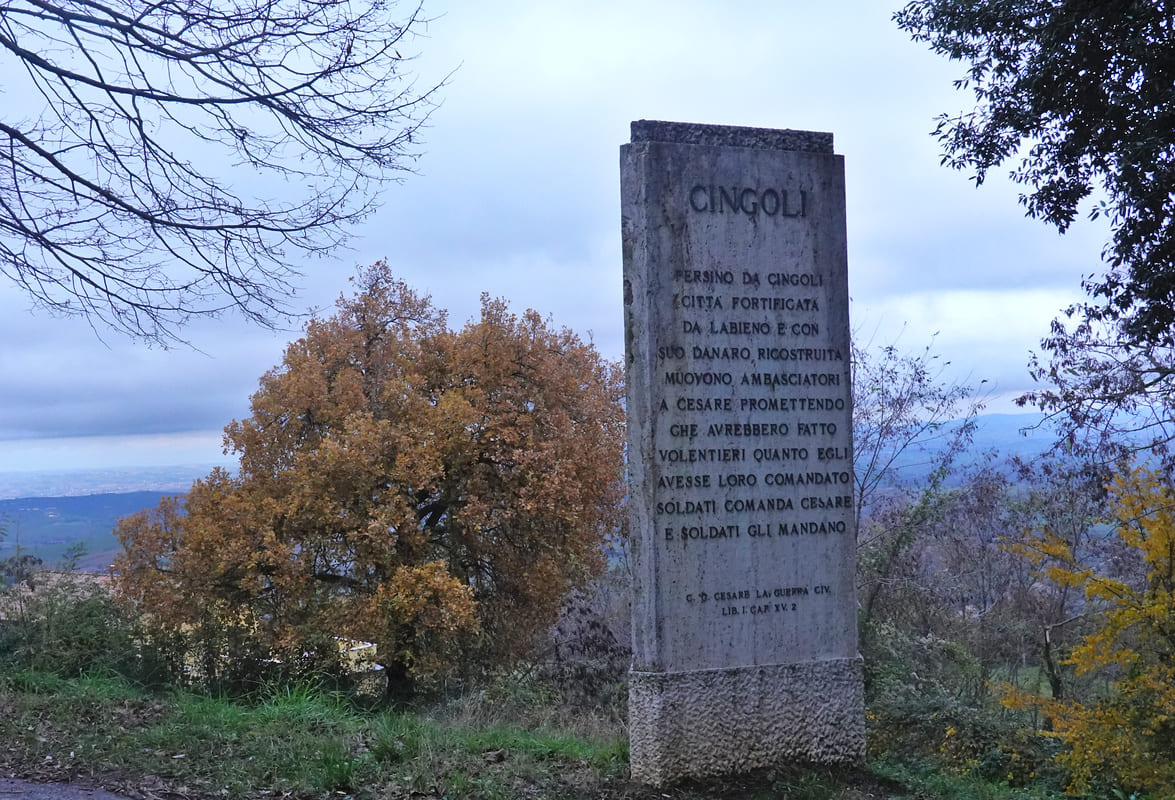
Labienus donated money to Cingulum to strengthen the walls. Incidentally, the Roman city of Cingulum was not located on the current site, but lower where Borgo Lorenzo is today. Unfortunately, due to a lack of financial resources, real excavations into this Roman municipium were never carried out, so there is probably still a lot to discover underground! (Cingulum would come from cingere or surround).
They left the busy road and walked back up past an old tower where the Capranica city gate used to be and finally arrived in the centre.
The two musicians sang a short song in a park.
But at 4.30 pm the hotel school Varnelli expected the first group for the show cooking. Isabelle followed this group, the other group would first visit Palazzo Castiglioni, the home of Pope Pius VIII. After all, she had already seen this and reported us back in our post, some time ago.
To Isabelle’s companions great relief the building they entered was heated and they could finally warm up again! A few students and teachers welcomed them, after which they took a seat in a kitchen with a small room. Beautifully decorated tables with paper placemats for a tasting were waiting for them.

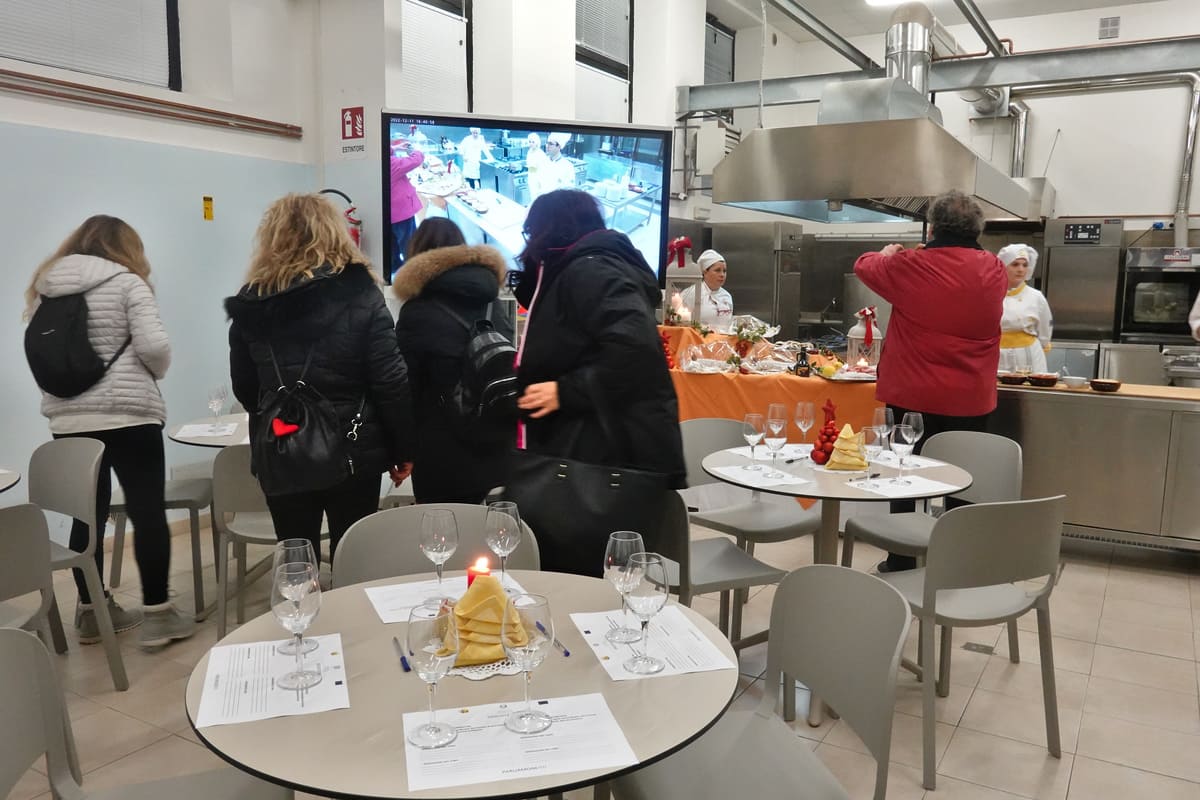

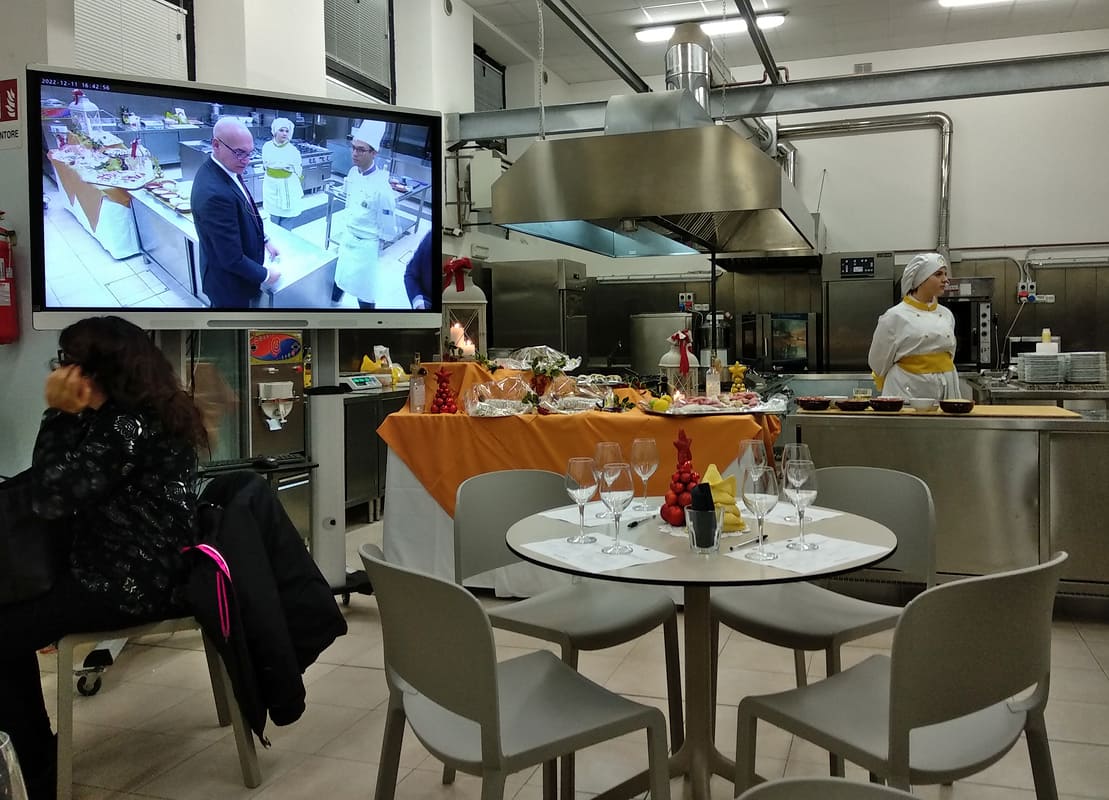

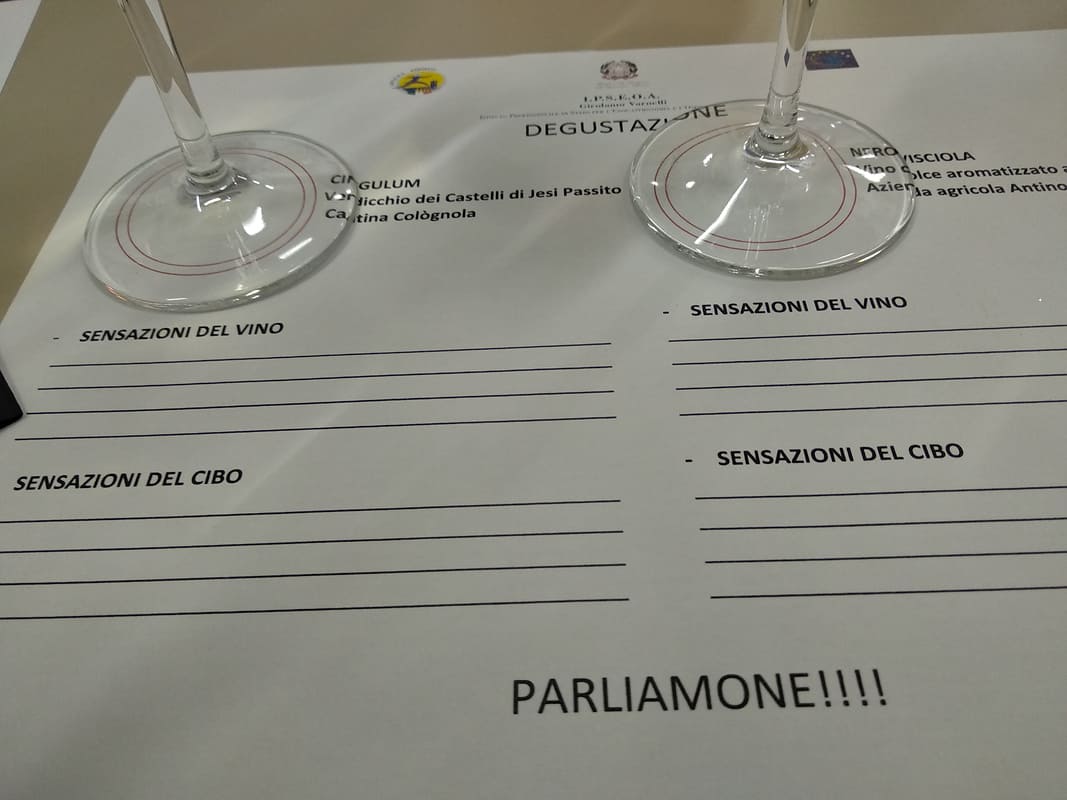
The whole setting looked very professional: the spectators could watch the entire show cooking on a large screen at the same time! After the official word of welcome from the mayor and the management, a teacher and some students started with the traditional cavallucci recipe. A Christmas pastry that originated with the simple farmers in the Middle Ages, originally without eggs and sugar, because it was too expensive.
The recipe that the teacher showed us came from a noble family in the early 1900s, so with eggs and sugar.
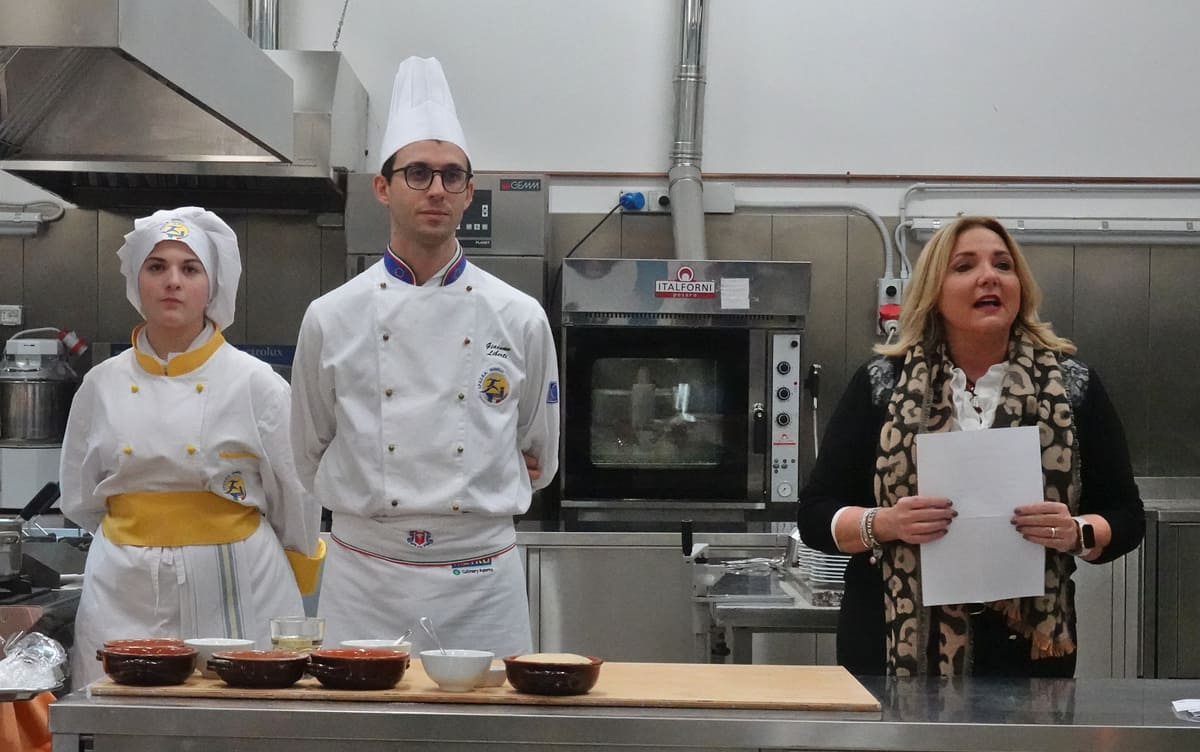
The name Cavallucci comes from cavallo, or horse, because the pastries are shaped like a horse’s back with incisions on either side that represent the horse hair. (By the way, Mamma Graziella already gave us her recipe, the more traditional poorer version.)
An interesting show cooking followed. The first food blogger Ilaria Cappellacci, originally from the north of the Abbruzzo, but now living in the south of le Marche because of her life partner, came up with a variant with chocolate.
She also replaced the white wine with red wine and dried figs were also used. The shape of the final pastry was given the letter C of Cingoli and Cavallucci.
Food blogger Anna Maria Giretti turned out to be a real Marchigian (from Jesi) but with a grandmother in Cingoli; as a child she was always allowed to watch her grandmother during the baking process. The nonna turned out to be present in the room.
Anna Maria’s version also turned out to be fanciful: star-shaped with a glaze, not from Alchermes, but from cornflour and visciola wine.
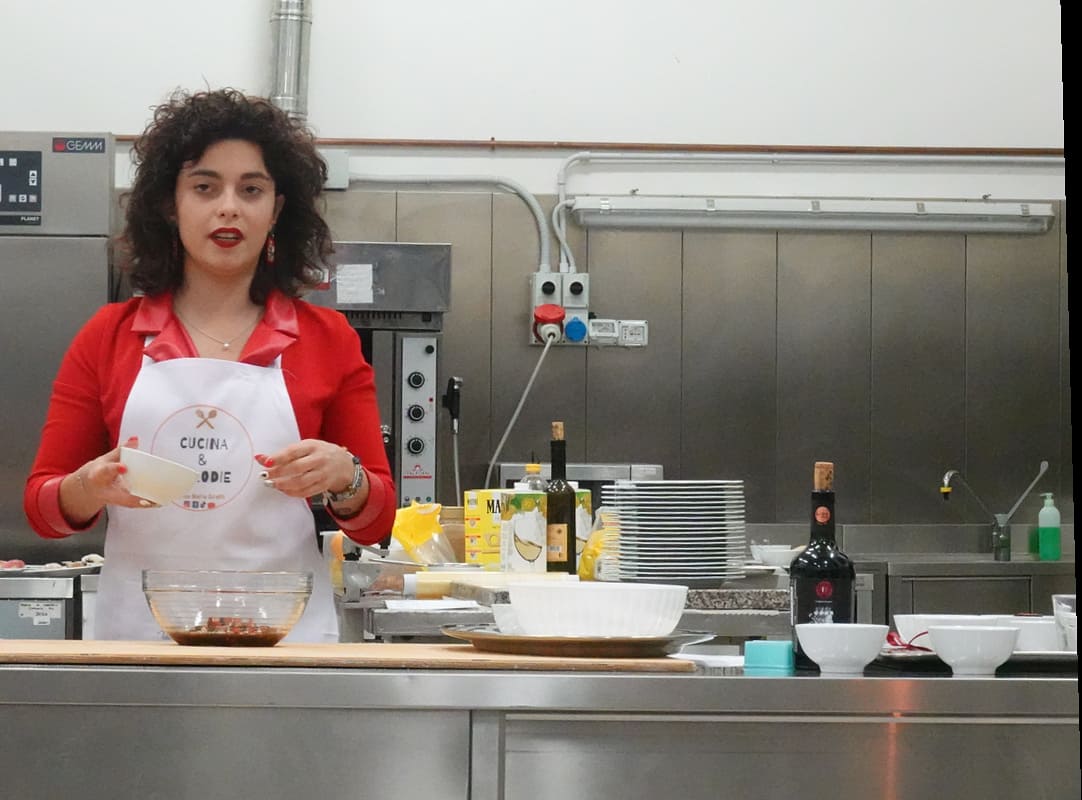
There hasn’t been only food, but also wines! A dessert wine Passito from the cantina Colognola on the one hand and a red visciola wine from the azienda agricola Antinori on the other hand. Under the guidance of a teacher, the participants learned to taste both wines and give an opinion on those. After the tasting, then came cavallucci and also a piece of serpe, a snake-shaped pastry, originally baked at Easter but in recent years earlier at Christmas.

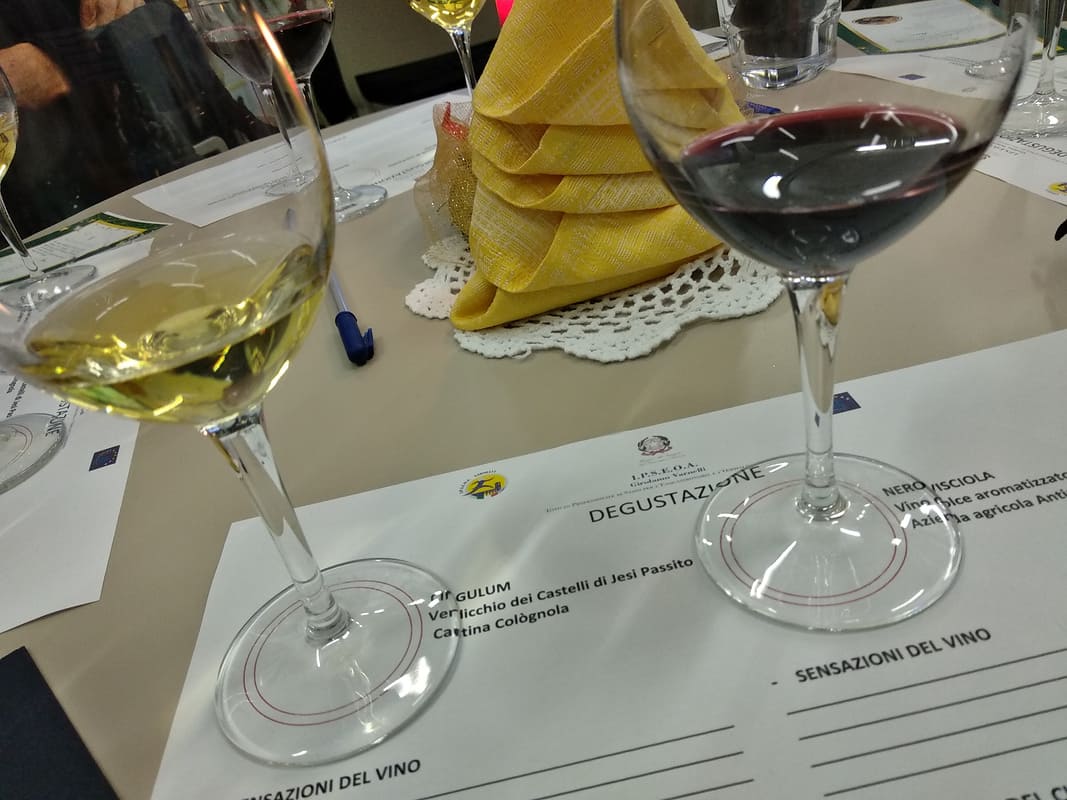
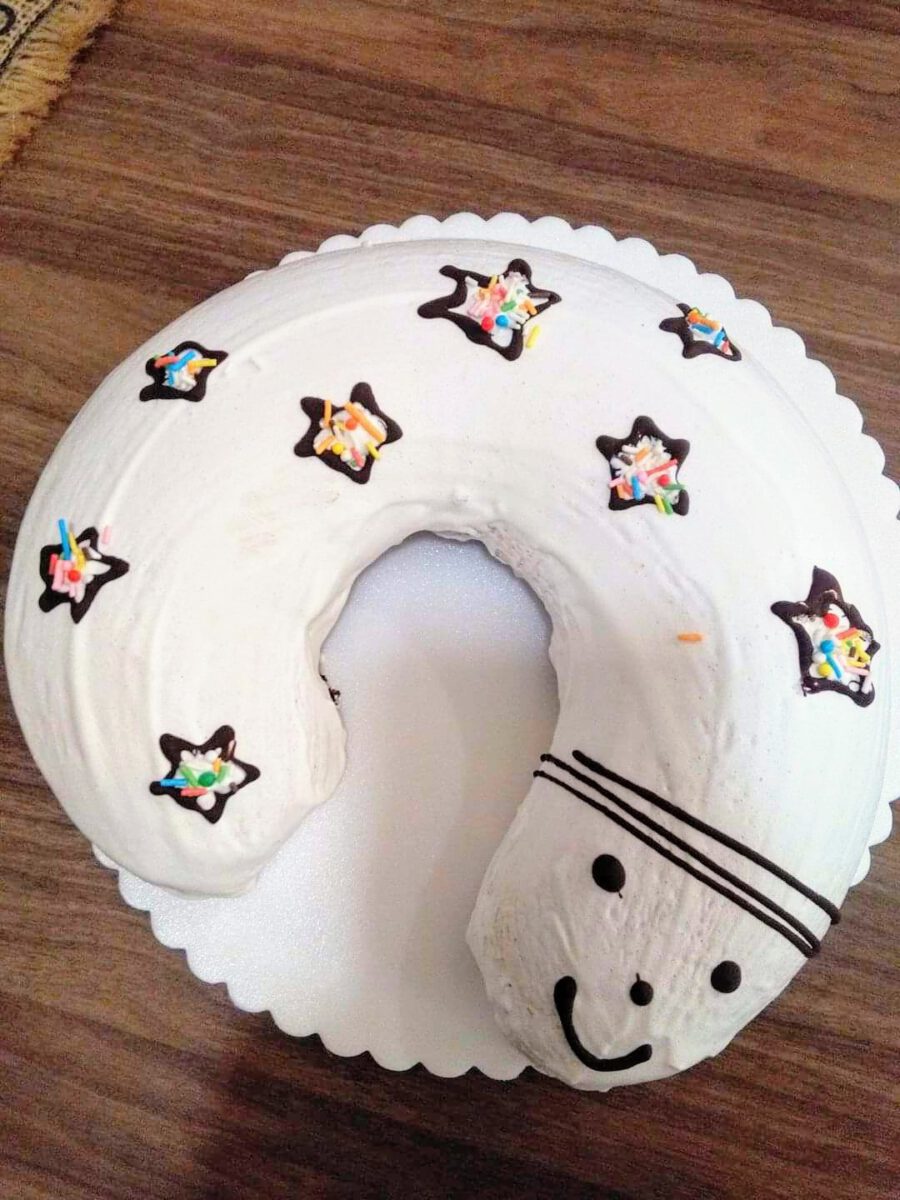
That was really yummy!!! Isabelle definitely preferred the chocolate version and the passito wine!
In the end, everyone had deserved a round of applause for a really excellent welcome and organization, and even two of the recipes used!
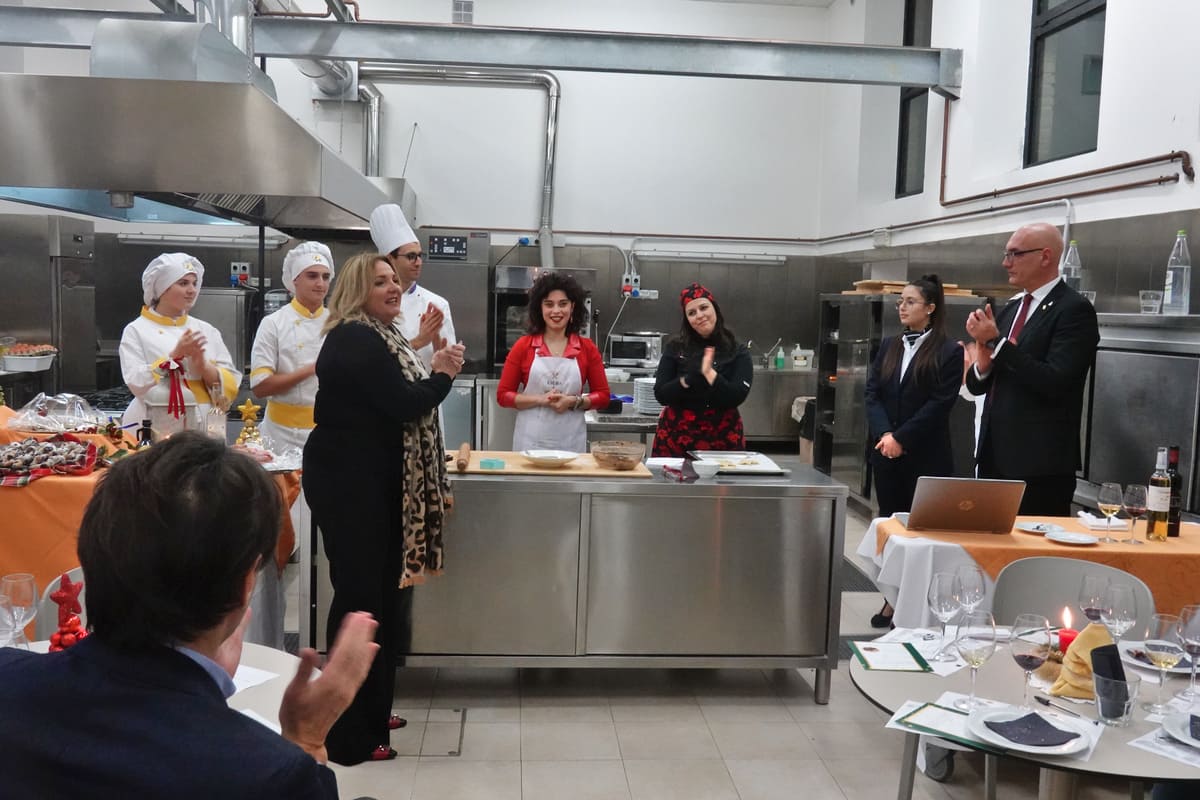
A very successful afternoon and, despite the cold, more than worth it !!!! But it is now difficult to choose: which cavalucci to bake ????
Recipe 1 from the hotel school:
- 750 gr. flour 0 (coarsely ground)
- 400 gr. chopped walnuts
- 200 gr. sugar
- 200 gr. chopped almonds
- 1.5 glass of white wine (preferably Verdicchio)
- 300 gr. candy fruits
- 120ml. sunflower oil
- 200 gr. bitter cocoa
- 1 egg
- 4 teaspoons of powdered coffee
- cinnamon and grated lemon zest
- 2 glasses of marsala
- 2 glasses of boiled wine
- 4 glasses of juice
- grated zest of 4 oranges
- bit of vanilla and bit of breadcrumbs
Mix flour, sugar, cinnamon and lemon zest and form a mound. Make a pit in it and then fill it with the oil, wine and egg. Knead into a nice ball and let it rest for an hour at room temperature.
Meanwhile prepare the filling: put all the ingredients together in a pan, except the breadcrumbs. Heat to almost boiling temperature for 10 minutes. Let it become lukewarm and then add just enough breadcrumbs to make it a reasonable solid mass. Let everything cool down.
Roll out the dough ball very thinly and then form discs of approx. 10-12 cm in diameter. Place a little filling in the center of each slice. Fold the disc into a half moon and then fold again in the shape of the cavalucci. Trim the top and sides with scissors. Then bake in the oven at 180 degrees for 20 minutes. Once out of the oven and cooled down or dust with peoser sugar or with red Alchermes liqueur and then some sugar on top.
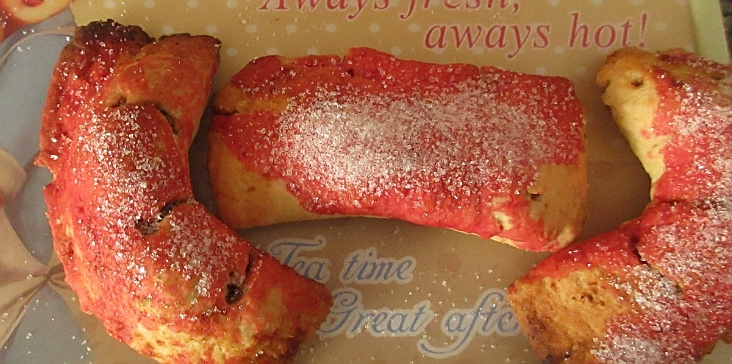
Recipe 2 from food blogger Ilaria cappellacci or from the renowned Giallozafferano:
- 100 gr. sunflower oil
- 30 gr. raisins
- 80 gr. Red wine
- 50 gr. dried figs
- 120 gr. sugar
- 20 gr. chopped hazelnuts
- 1 teaspoon of anise seed
- 20 gr. chopped peeled almonds
- 180 gr. flour 0
- 30 gr. dark chocolate
- 180 gr. flour 00
- 1 teaspoon of cinnamon
- 1 pinch baking ammonia or baking soda
- 40 gr. honey
- 100 gr. apples cut into small pieces
- 30 gr. butter
- 50 ml. Varnelli (anise liqueur)
Soak raisins and figs in warm water and a little Varnelli for 15 minutes.
Bake apples in the butter and some Varnelli.
Mix the nuts, almonds with the soaked raisins and figs. Add cinnamon and almost all the chocolate and honey. Finally add the apples. Mix wine, oil, aniseed and sugar together. Add the flour and baking ammonia here. Knead into a ball. Roll out nicely and cut out small rectangles. Place the filling in the center and roll the rectangle into a cylinder. Finally, press the ends well and form a letter C. Bake in the oven at 200 degrees for 20 minutes. Melt the rest of the chocolate in a bain marie.
Dip the ends of the biscuits in Varnelli and then in the melted chocolate. Dust with icing sugar.
Recipe 3 from food blogger Anna Maria Giretti or on instagram @anna_mari_giretti will follow. As soon as we receive it, we’ll write it down here.
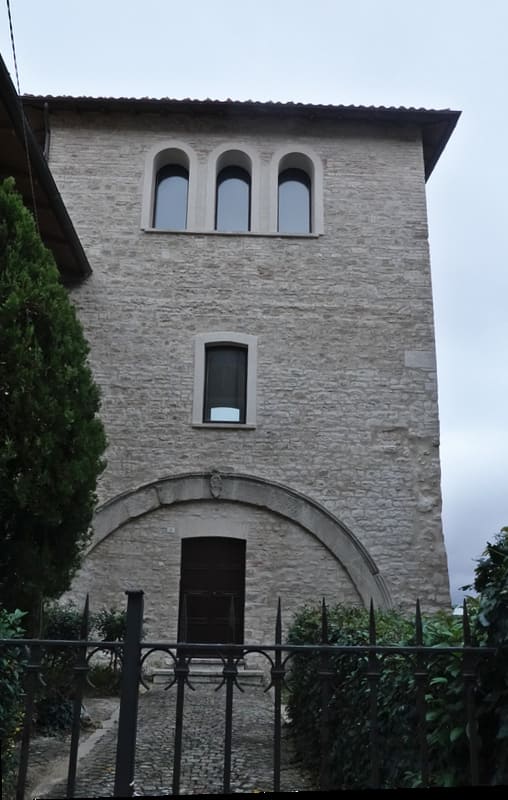


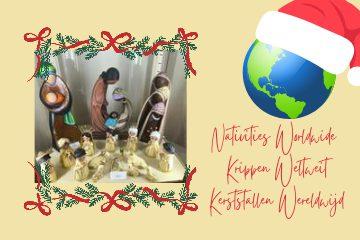
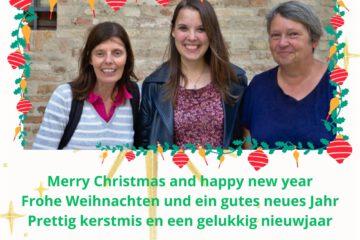
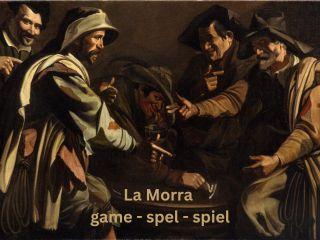
0 Comments